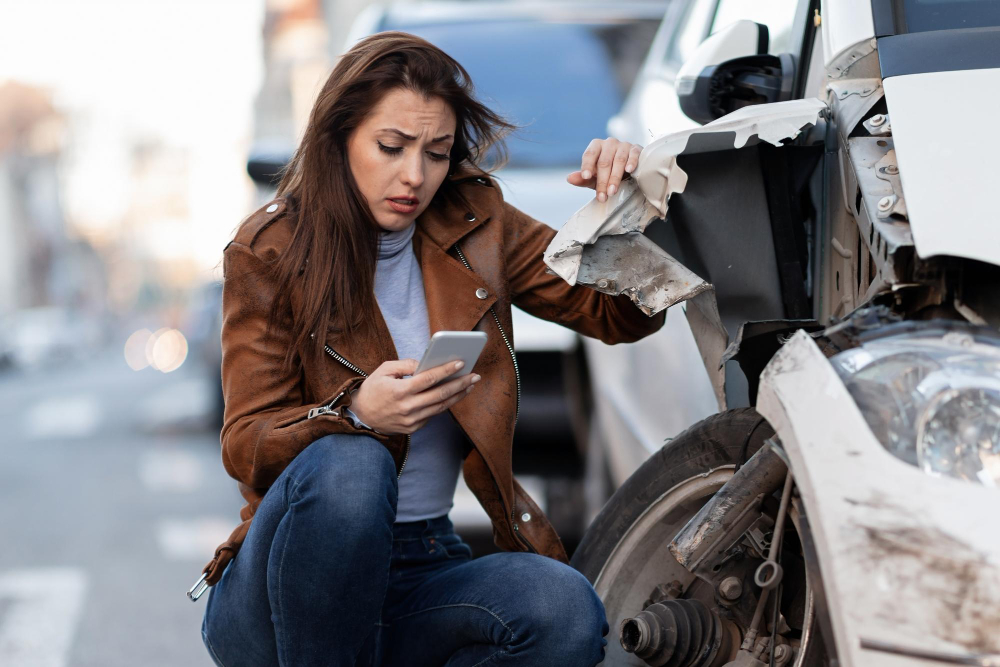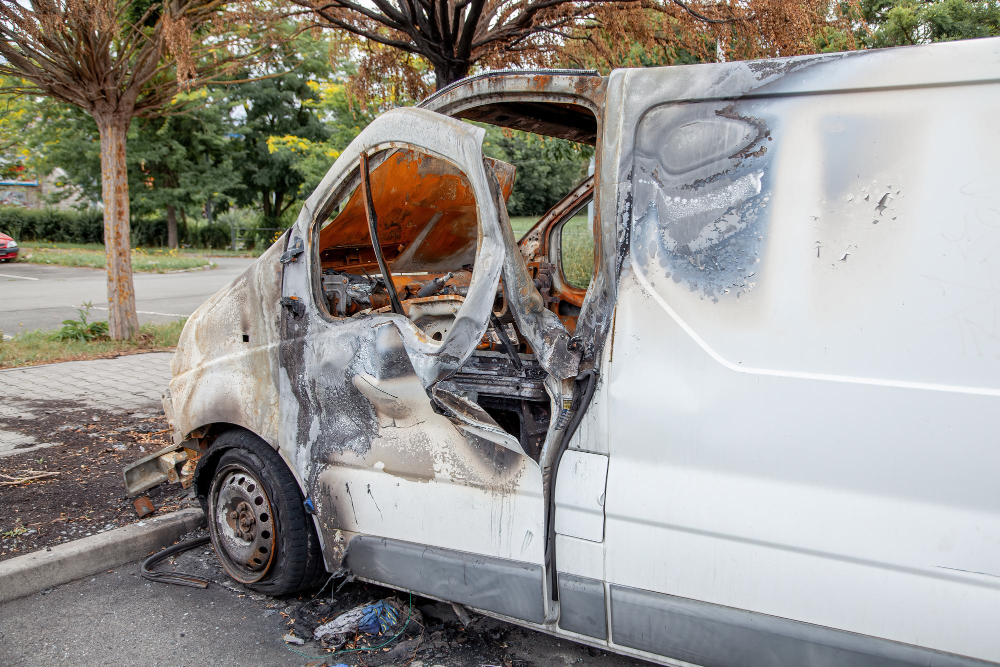Car accidents are an unfortunate reality of modern life, affecting millions of people each year. These incidents can lead to a wide range of injuries, from minor cuts and bruises to severe, life-threatening conditions. Recognizing the signs and symptoms of common car accident injuries is crucial for ensuring timely and effective medical treatment. Whether you’re a driver, passenger, or even a concerned bystander, understanding how to identify these injuries can make a significant difference in the outcomes for those involved.
What Is A Car Accident Injury?

A car accident injury is any physical or psychological harm that a person sustains as a result of a motor vehicle collision. These injuries can range from minor bruises and cuts to severe, life-threatening conditions. Car accident injuries are caused by the force and impact involved in collisions, whether they occur between vehicles, with stationary objects, or due to vehicle rollovers. The nature and severity of these injuries depend on various factors, including the speed of the vehicles, the point of impact, the use of safety devices like seat belts and airbags, and the overall health and age of the individuals involved. Immediate medical attention is crucial for diagnosing and treating these injuries to prevent complications and promote recovery.
Causes Of Car Accident Injury
Car accident injuries can be caused by a variety of factors, ranging from human error to environmental conditions. Understanding these causes can help in both preventing accidents and managing the aftermath when they do occur. Here are some common causes of car accident injuries:
1. Human Error
- Distracted Driving: Using mobile phones, eating, adjusting the radio, or other activities that divert attention from driving.
- Speeding: Driving above the speed limit reduces the driver’s ability to react in time to avoid collisions.
- Drunk Driving: Alcohol impairs judgment, reaction times, and motor skills, increasing the likelihood of accidents.
- Fatigue: Driving while tired can impair concentration and reaction times, similar to driving under the influence.
- Aggressive Driving: Behaviors such as tailgating, weaving through traffic, and road rage can lead to accidents.
2. Environmental Factors
- Weather Conditions: Rain, snow, fog, and ice can reduce visibility and traction, increasing the risk of accidents.
- Poor Road Conditions: Potholes, uneven surfaces, and inadequate signage can contribute to accidents.
- Low Visibility: Driving at night or in poorly lit areas can make it difficult to see hazards on the road.
3. Mechanical Failures
- Brake Failure: Malfunctioning brakes can prevent a vehicle from stopping in time.
- Tire Blowouts: Sudden tire failure can cause loss of control.
- Steering or Suspension Issues: Problems with steering or suspension can make it difficult to control the vehicle.
- Engine or Transmission Failure: Mechanical issues can lead to sudden stops or loss of control.
4. Other Road Users
- Pedestrians: Unpredictable movements or crossing streets outside of crosswalks can cause accidents.
- Cyclists: Cyclists sharing the road with vehicles can lead to collisions, especially if drivers are not attentive.
- Other Drivers: Mistakes or reckless behavior by other drivers can lead to accidents.
5. Vehicle Design and Safety Features
- Lack of Safety Features: Vehicles without adequate safety features such as airbags, anti-lock brakes, and electronic stability control are more likely to result in injuries during a crash.
- Defective Parts: Manufacturing defects in critical components like airbags, seat belts, or steering systems can contribute to injuries.
6. Inadequate Maintenance
- Lack of Regular Maintenance: Failing to maintain the vehicle properly, such as not replacing worn tires or faulty brakes, can lead to mechanical failures and accidents.
Types Of Car Accidents
Car accidents can vary widely in terms of their nature and the specific circumstances involved. Here are some other types of car accidents that are commonly reported:
Rear-End Collisions
It occurs when one vehicle hits another from behind. This type of accident often results from tailgating, distracted driving, or sudden stops.
Side-impact collisions (T-bone accidents)
Happens when the front of one vehicle strikes the side of another vehicle. These accidents commonly occur at intersections or when a driver fails to yield the right of way.
Head-On Collisions
Involve the front ends of two vehicles colliding directly with each other. Head-on collisions often result from wrong-way driving, crossing the centerline, or losing control of the vehicle.
Single-Vehicle Accidents
Occur when only one vehicle is involved in the accident. This can include collisions with fixed objects like trees, poles, or barriers, as well as rollover accidents due to loss of control.
Multi-Vehicle Pileups
Involve multiple vehicles colliding with each other in a chain reaction. These accidents often occur on highways or during adverse weather conditions, such as fog or heavy rain.
Sideswipe Accidents
Happens when two vehicles traveling in the same direction make contact with each other along their sides. Sideswipe accidents can occur when changing lanes or merging improperly.
Intersection Accidents
Occur at intersections where vehicles are crossing paths. These accidents often involve failures to yield, running red lights or stop signs, or misjudging the speed of oncoming traffic.
Parking Lot Accidents
Happens in parking lots or garages and typically involves low-speed collisions, such as backing out of parking spaces or navigating tight areas.
Hit-and-Run Accidents
Involve a driver leaving the scene of the accident without providing contact information or assisting injured parties. Hit-and-run accidents can occur in various scenarios but are especially common in urban areas.
Common Types Of Car Accident Injuries

Car accidents can result in a wide range of injuries, varying from minor to severe. Recognizing these injuries early can help ensure timely medical treatment, which can be crucial for recovery.
Here are some common car accident injuries and how to recognize them:
1. Whiplash
Whiplash is a neck injury that occurs when the head is suddenly jolted backward and then forward, typically resulting from rear-end car collisions. This rapid motion stretches and tears the muscles and ligaments in the neck, leading to pain and discomfort.
Symptoms of Whiplash
- Neck Pain and Stiffness: Pain that worsens with movement.
- Headaches: Often starting at the base of the skull.
- Dizziness: A sensation of spinning or lightheadedness.
- Fatigue: Feeling unusually tired.
- Shoulder and Upper Back Pain: Discomfort spreading to these areas.
2. Concussions and Traumatic Brain Injuries (TBIs)
Concussions and traumatic brain injuries (TBIs) are types of brain injuries caused by a blow or jolt to the head, often resulting from car accidents. These injuries can range from mild concussions to severe TBIs, which can lead to long-term cognitive and physical impairments. A concussion is the most common and least severe type of TBI, often resulting in temporary loss of normal brain function.
Symptoms of Concussions and TBIs
- Headache or a feeling of pressure in the head
- Temporary loss of consciousness
- Confusion or feeling as if in a fog
- Dizziness or “seeing stars”
- Ringing in the ears
- Nausea or vomiting
3. Broken Bones
Broken bones, also known as fractures, are common injuries resulting from car accidents. A fracture occurs when there is a break or cracks in the continuity of a bone.
Types of broken bone injury
There are several types of broken bone injuries, classified based on the nature and severity of the fracture:
- Stable Fracture: The broken ends of the bone are still aligned and relatively stable.
- Compound (Open) Fracture: The broken bone pierces through the skin, increasing the risk of infection.
- Transverse Fracture: The fracture line is horizontal across the bone shaft.
- Oblique Fracture: The fracture line runs diagonally across the bone.
- Comminuted Fracture: The bone is shattered into three or more pieces.
- Greenstick Fracture: Common in children where the bone bends and cracks but doesn’t completely break.
- Compression Fracture: Typically occurs in the spine where the bone collapses due to pressure.
Symptoms
- Pain: Intense pain at the site of the fracture, which may worsen with movement or pressure.
- Swelling: The injured area may swell due to inflammation and tissue damage.
- Bruising: Bruising (discoloration) around the affected area due to bleeding under the skin.
- Deformity: the affected limb or area may appear deformed or out of its normal alignment.
4. Soft Tissue Injuries
Soft tissue injuries in the context of car accidents typically involve damage to muscles, tendons, or ligaments. These injuries can range from mild strains and sprains to more severe tears or contusions.
Types of Soft Tissue Injuries
Here are some common types of soft tissue injuries:
- Sprains: Occur when a ligament (connective tissue that connects bones to bones) is stretched or torn.
- Strains: Involve damage to a muscle or tendon (connective tissue that connects muscles to bones).
- Contusions: Commonly known as bruises, contusions occur when small blood vessels beneath the skin rupture.
- Tendonitis: Inflammation or irritation of a tendon, usually caused by repetitive movements or overuse.
- Bursitis: Inflammation of the bursae, small fluid-filled sacs that cushion and lubricate areas where tendons or muscles glide over bones.
Symptoms
- Pain around the affected joint
- Swelling
- Bruising
- Limited range of motion
- Instability or feeling “loose” in the joint
5. Internal Injuries
Internal injuries can be serious and sometimes life-threatening, especially after a car accident.
Types of internal injuries
- Abdominal Injuries
- Organ Damage
- Pneumothorax (Collapsed Lung)
- Hemothorax (Blood in the Chest Cavity)
- Internal Bleeding
- Spinal Cord Injuries
Symptoms
- Pain or Tenderness
- Swelling or Bruising
- Pale or Clammy Skin
- Rapid Heart Rate (Tachycardia)
6. Spinal Cord Injury
Spinal cord injuries (SCI) can be devastating and often result from significant trauma, such as car accidents. The symptoms of a spinal cord injury can vary widely depending on the location and severity of the injury.
Symptoms
- Loss of Movement (Paralysis)
- Loss of Sensation
- Difficulty Breathing or Coughing
- Muscle Spasms or Spasticity
- Loss of Bowel or Bladder Control
7. Chest & Pulmonary Injuries
Chest and pulmonary injuries can vary widely in severity depending on the nature of the trauma from a car accident.
Types Of Chest & Pulmonary
- Rib Fractures
- Pneumothorax (Collapsed Lung)
- Hemothorax (Blood in the Chest Cavity)
- Pulmonary Contusion (Bruised Lung)
- Flail Chest
- Cardiac Contusion (Heart Bruise)
- Traumatic Aortic Rupture
- Tracheobronchial Injury
- Aspiration Pneumonia
Symptoms
- Chest Pain: Sharp, stabbing pain in the chest area, often worsened by breathing, coughing, or movement.
- Difficulty Breathing: Shortness of breath, shallow breathing, or tightness in the chest.
- Coughing: Especially if it produces blood or if the cough is painful.
- Rapid Breathing (Tachypnea): Breathing faster than normal, often due to pain or the body’s response to injury.
- Cyanosis: Bluish tint to the lips, fingers, or skin, indicating a lack of oxygen in the bloodstream.
Things to Do If You Are Injured In A Car Accident

If you are injured in a car accident, taking the right steps can help protect your health and legal rights.
Here’s what you should do:
Check Yourself for Injuries: Assess your condition and check for any injuries. If you’re able to move, carefully check for pain, tenderness, or any signs of trauma.
Check Others for Injuries: Check on passengers and others involved in the accident. Offer assistance if you can do so safely.
Call Emergency Services: Dial emergency services (911) immediately if anyone is seriously injured or if there’s significant damage. Even if injuries seem minor, it’s advisable to get medical help on the scene.
Seek Medical Attention: Accept medical treatment, either at the scene or by going to the hospital. Some injuries, like internal injuries or concussions, may not be immediately apparent but can be serious.
Types Of Damages In Car Accident Injuries Claim
In a car accident injury claim, there are several types of damages that you may seek compensation for. These damages can broadly be categorized into two main types: economic and non-economic damages.
1. Economic Damages
Medical Expenses: Costs related to medical treatment, including ambulance fees, hospital stays, surgeries, medication, rehabilitation, and future medical expenses related to the injury.
Lost Earnings: Compensation for income lost due to the injury, including wages missed during recovery, diminished earning capacity if the injury affects your ability to work in the future and lost opportunities for bonuses or promotions.
Property Damage: Costs to repair or replace your vehicle or other property damaged in the accident.
Other Financial Losses: This can include expenses for household help if you are unable to perform tasks due to your injuries, or any other out-of-pocket expenses directly related to the accident and injury.
2. Non-Economic Damages
Pain and Suffering: Compensation for physical pain and discomfort caused by the injuries, both current and anticipated future pain.
Emotional Distress: Compensation for psychological impact such as anxiety, depression, or post-traumatic stress disorder (PTSD) resulting from the accident.
Loss of Enjoyment of Life: Compensation for the loss of ability to participate in activities or hobbies you enjoyed before the accident.
Loss of Consortium: Compensation for the impact the injuries have on your relationship with your spouse or partner, including loss of companionship, intimacy, or support.
3. Punitive Damages
In rare cases where the defendant’s actions were particularly egregious, punitive damages may be awarded. These are intended to punish the defendant and deter similar behavior in the future.
Role Of Car Accident Injury Lawyer
A car accident injury lawyer plays a crucial role in helping individuals who have been injured in car accidents. Here are some key aspects of their role:
Legal Advice and Guidance: A car accident injury lawyer provides legal advice and guidance throughout the claims process. They explain your rights and legal options, helping you understand the complexities of personal injury law.
Investigation: They conduct a thorough investigation into the accident, gathering evidence such as police reports, witness statements, medical records, and any other relevant documentation to build a strong case.
Negotiation with Insurance Companies: They handle communications and negotiations with insurance companies on your behalf. This includes advocating for fair compensation for your injuries, medical expenses, lost wages, and other damages.
Determining Liability: They analyze the circumstances of the accident to determine liability (who is at fault). This may involve reviewing traffic laws, conducting interviews, and consulting with accident reconstruction experts if needed.
Filing Legal Documents: They handle all the paperwork and legal documentation required for your claim, ensuring everything is filed correctly and within deadlines.
Representation in Court: If a fair settlement cannot be reached through negotiations, they are prepared to represent you in court. They will present your case to a judge and jury, advocating for your rights and seeking the compensation you deserve.
Maximizing Compensation: They work to maximize the compensation you receive for your injuries and losses. This includes not only current expenses but also future medical costs, loss of earning capacity, pain and suffering, and other non-economic damages.
Providing Support: A car accident injury lawyer provides emotional support and reassurance during what can be a challenging and stressful time. They guide you through the legal process, addressing your concerns and answering your questions.
FAQs
What are the most common injuries from car accidents?
Common injuries include whiplash, head injuries (concussions, traumatic brain injury), neck and back injuries (sprains, strains, herniated discs), fractures, and soft tissue injuries (bruises, contusions, strains).
How do I recognize whiplash after a car accident?
Look for symptoms such as neck pain and stiffness, headaches (especially starting at the base of the skull), limited range of motion in the neck, and possible pain or numbness in the shoulders or arms.
What are the signs of a head injury from a car accident?
Symptoms may include confusion, dizziness, nausea or vomiting, headaches, blurred vision, sensitivity to light or noise, and in severe cases, loss of consciousness.
What are common symptoms of back injuries after a car accident?
Watch for back pain or stiffness, difficulty walking or moving, shooting pain down the legs, numbness or tingling in the limbs, and potential signs of spinal cord injury like loss of sensation or paralysis.
How can I recognize internal injuries following a car accident?
Look for abdominal pain or tenderness, swelling or bruising around the abdomen, dizziness or fainting, nausea and vomiting, and signs of internal bleeding such as blood in urine or stools.
Seeking For The Help Related To Car Accident Injuries
Are you seeking legal guidance and support after a car accident? Our team of experienced car accident injury lawyers is here to help. We specialize in assisting individuals who have been injured due to the negligence of others on the road. Our dedicated attorneys are committed to advocating for your rights and securing the compensation you deserve. Contact us today at (312) 584-2860 for a consultation to discuss your case confidentially and explore how we can assist you in your recovery journey.





